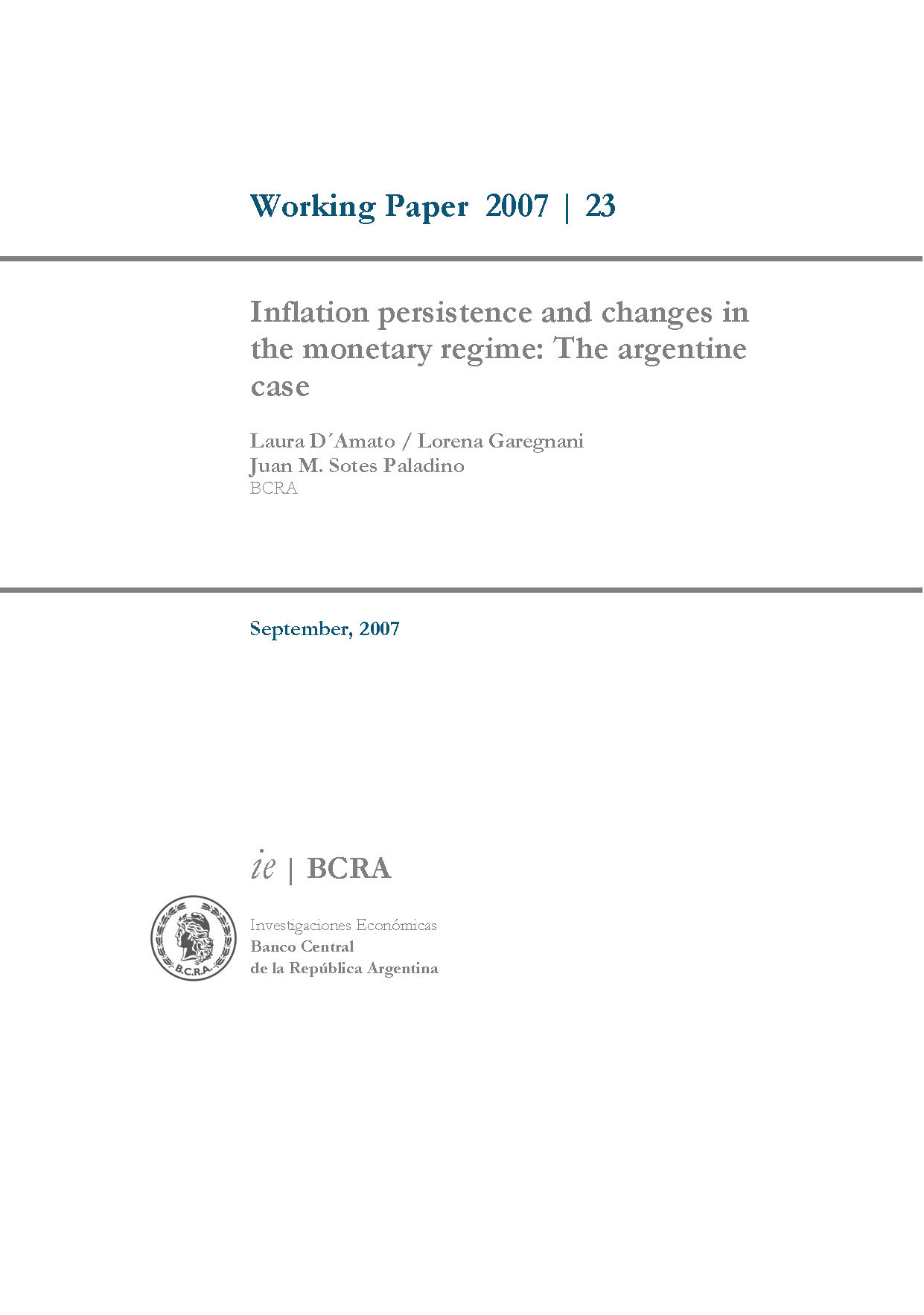Inflation Persistence and Changes in the Monetary Regime: The Argentine Case
Working papers | 2007 | N 23
Keywords:
Inflation persistence, Time-varying mean, Time-series, Frequency-domain approachAbstract
We study the evolution of inflation persistence in Argentina between 1980 and 2007, a period in which significant changes in mean inflation can be detected by simple observation. We adopt both a time-series univariate and a frequency-domain approach. Following the former perspective breaks in the mean are identified, with inflation being highly persistent during the high inflation period, but less persistent since the adoption of the Convertibility regime and the decline of the inflation rate afterwards. When we analyze the "low inflation" period separately, we are able to identify changes in both mean and persistence of inflation before and after the adoption of a managed float in 2002. In this sense, frequency-domain analysis shows that overall volatility in prices is significantly higher during the post-Convertibility regime, though the contribution of high-frequency (temporary and seasonal) movements to this volatility was relatively more important during the Convertibility regime.
JEL classification: C22, E31, E52


